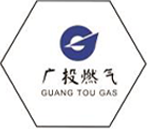
Dec . 05, 2024 08:44
Back to list
Pressure Relief Valve Overview and Applications in Various Industries
Understanding Pressure Reduction Valves Essential Components in Fluid Systems
Pressure reduction valves (PRVs) are vital components in various fluid systems, designed to maintain a safe and stable pressure level downstream of the valve. In many applications, fluctuations in pressure can lead to equipment damage, inefficiency, or even safety hazards. Thus, understanding how PRVs work and their significance in different industries is crucial for engineers, technicians, and anyone involved in managing fluid systems.
What is a Pressure Reduction Valve?
A pressure reduction valve is a type of control valve that automatically reduces and regulates the pressure of a fluid entering a system. This device is typically used in hydraulic and pneumatic systems, as well as in water supply systems, gas distribution, and steam pipelines. The primary function of a PRV is to ensure that the downstream pressure remains constant regardless of variations in the upstream pressure.
How Does a PRV Work?
At the core of a pressure reduction valve is a mechanism that compares upstream and downstream pressures. When the upstream pressure exceeds a predetermined set point, the valve adjusts to allow a controlled amount of fluid to pass through while reducing the pressure. This is achieved through a spring-loaded diaphragm or piston that responds to pressure changes.
As the upstream pressure increases, it pushes against the diaphragm, compressing the spring and allowing the valve to open. Conversely, when the downstream pressure falls below the set point, the spring pushes the diaphragm back to a closed position, restricting the flow of fluid and thus raising the downstream pressure. This feedback loop ensures stability in the system.
Applications of Pressure Reduction Valves
PRVs are employed in a variety of applications across different industries
.
2. Gas Distribution In pipelines that transport natural gas, pressure reduction valves are crucial for maintaining safe operational pressures, preventing leaks, and ensuring user safety.
صمام تخفيض الضغط

3. Industrial Processes Many manufacturing and processing plants utilize PRVs in their hydraulic systems to control pressure in machinery, improving efficiency and prolonging equipment life.
4. Steam Systems In steam applications, where pressure control is critical to performance and safety, PRVs ensure that steam is delivered at the appropriate pressure for heating and processing needs.
Advantages of Using Pressure Reduction Valves
1. Safety By regulating pressure, PRVs protect equipment and personnel from the dangers associated with high-pressure conditions.
2. Efficiency Maintaining optimal pressure levels leads to improved efficiency in fluid systems, reducing energy consumption and operational costs.
3. Longevity of Equipment By preventing pressure spikes and fluctuations, PRVs help to extend the lifespan of pumps, pipes, and other components in a system.
4. Flexibility Pressure reduction valves can be adjusted to meet specific pressure requirements, making them versatile for various applications.
Conclusion
Pressure reduction valves play an indispensable role in ensuring the safety, efficiency, and reliability of fluid systems. By maintaining consistent pressure levels, these valves protect equipment, facilitate smooth operations, and contribute to overall system performance. As industries continue to evolve, the importance of understanding and implementing effective pressure control solutions like PRVs will remain paramount in achieving operational excellence and safety.
Understanding pressure reduction valves is not only beneficial for technical personnel but also essential for anyone involved in designing or managing fluid delivery systems. Their significance across multiple sectors underscores their role as foundational components in modern engineering practices.
Latest news
-
Safety Valve Spring-Loaded Design Overpressure ProtectionNewsJul.25,2025
-
Precision Voltage Regulator AC5 Accuracy Grade PerformanceNewsJul.25,2025
-
Natural Gas Pressure Regulating Skid Industrial Pipeline ApplicationsNewsJul.25,2025
-
Natural Gas Filter Stainless Steel Mesh Element DesignNewsJul.25,2025
-
Gas Pressure Regulator Valve Direct-Acting Spring-Loaded DesignNewsJul.25,2025
-
Decompression Equipment Multi-Stage Heat Exchange System DesignNewsJul.25,2025

